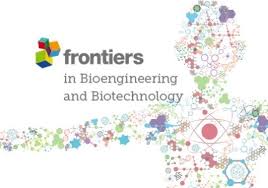Ver ítem
- xmlui.general.dspace_homeCentros e Institutos de InvestigaciónCICVyA. Centro de Investigación en Ciencias Veterinarias y AgronómicasInstituto de GenéticaArtículos científicosxmlui.ArtifactBrowser.ItemViewer.trail
- Inicio
- Centros e Institutos de Investigación
- CICVyA. Centro de Investigación en Ciencias Veterinarias y Agronómicas
- Instituto de Genética
- Artículos científicos
- Ver ítem
Argentina’s local crop biotechnology developments: why have they not reached the market yet?
Resumen
Plant biotechnology in Argentina started at the end of the 1980s, leading to the development of numerous research groups in public institutions and, a decade later, to some local private initiatives. The numerous scientific and technological capacities existing in the country allowed the early constitution in 1991 of a sound genetically modified organisms biosafety regulatory system. The first commercial approvals began in 1996, and to date, 59 events
[ver mas...]
Plant biotechnology in Argentina started at the end of the 1980s, leading to the development of numerous research groups in public institutions and, a decade later, to some local private initiatives. The numerous scientific and technological capacities existing in the country allowed the early constitution in 1991 of a sound genetically modified organisms biosafety regulatory system. The first commercial approvals began in 1996, and to date, 59 events have obtained permits to be placed on the market, however, only two have been developed locally by public-private partnerships. The transgenic events developed at public institutions pursue different objectives in diverse crops. However, once these events have been developed in laboratories, it is difficult to move toward a possible commercial approval. In this work, we analyze several reasons that could explain why local developments have not reached approvals for commercialization, highlighting aspects related to the lack of strategic vision in the institutions to focus resources on projects to develop biotechnological products. Although progress has been made in generating regulatory rules adapted to research institutes (such as the regulations for biosafety greenhouses and ways of presenting applications), researchers still do not conceive regulatory science as a discipline. They generally prefer not to be involved in the design of regulatory field trials or regulatory issues related to the evaluation of events. In that sense, some of the aspects considered a regulatory affairs platform for the public scientific system and the reinforcement of laboratories that perform tests required under the Argentine regulation.
[Cerrar]

Autor
Lewi, Dalia Marcela;
Vicien, Carmen;
Fuente
Frontiers in Bioengineering and Biotechnology 8 : 301 (Abril 2020)
Fecha
2020-04
Editorial
Frontiers Media
ISSN
2296-4185
Formato
pdf
Tipo de documento
artículo
Palabras Claves
Derechos de acceso
Abierto
 Excepto donde se diga explicitamente, este item se publica bajo la siguiente descripción: Creative Commons Attribution-NonCommercial-ShareAlike 2.5 Unported (CC BY-NC-SA 2.5)
Excepto donde se diga explicitamente, este item se publica bajo la siguiente descripción: Creative Commons Attribution-NonCommercial-ShareAlike 2.5 Unported (CC BY-NC-SA 2.5)


